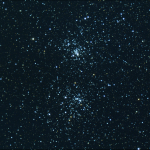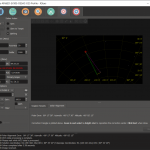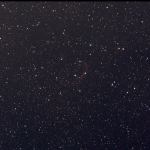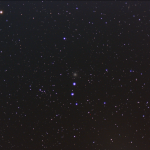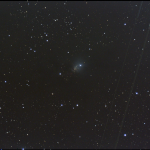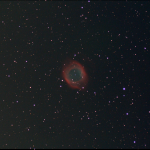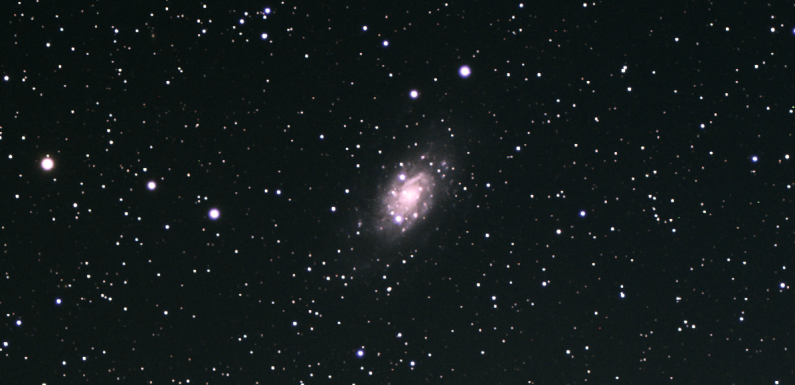
Nice clear night with temperatures starting in the mid-40s and dropping down to about freezing as the night went on. The Moon was up but is only about 43%, so not as bright as will be in a few more days. The plan was to capture some data for NGC 2403 which is Goofi’s Beginning Deep sky Imaging Challenge for January 2023 and then try to have a look at Comet C/2022 E3 (ZTF).
I uncovered the scope around 5:30 and ran the Ekos Polar Alignment Routine just after dark. For this session I was going full on Astrophotography. I set up the Ekos Scheduler to capture a couple hours of NGC 2403 for the challenge.
Equipment Setup:
Scope: SVBONY SV503 102ED w/ 0.8 Focal Reducer (FL: 571mm F/5.6)
Camera: ZWO ASI294MC Pro – Cooled to -10 C
Filter: SVBONY UV/IR Cut
Guide: SVBONY SV106 60mm (f/4) with OSSAG
Mount: Sky Watcher EQ6R-Pro
Connectivity: Raspberry Pi INDI Server
NGC 2403 is an intermediate spiral galaxy in the constellation Camelopardalis. This galaxy is a member of the M81 group and is also Goofi’s Imaging Challenge, January 2023 in the CloudyNight’s Beginning Deep Sky Imaging Forum.
KStars/Ekos: Ekos Scheduler Job to collect 40 x 180 second exposures at 121 gain, 30 offset, and bin 2×2. Captured an additional 5 exposures after job completion. Track, Focus, Align, Guide, and Capture. The average guiding RMS for the job was 0.70.
This is an ASTAP stack of 45 x 180 second exposures, 20 darks, and 100 (ADU 8192) flats. Color level and curve adjustments in GIMP.
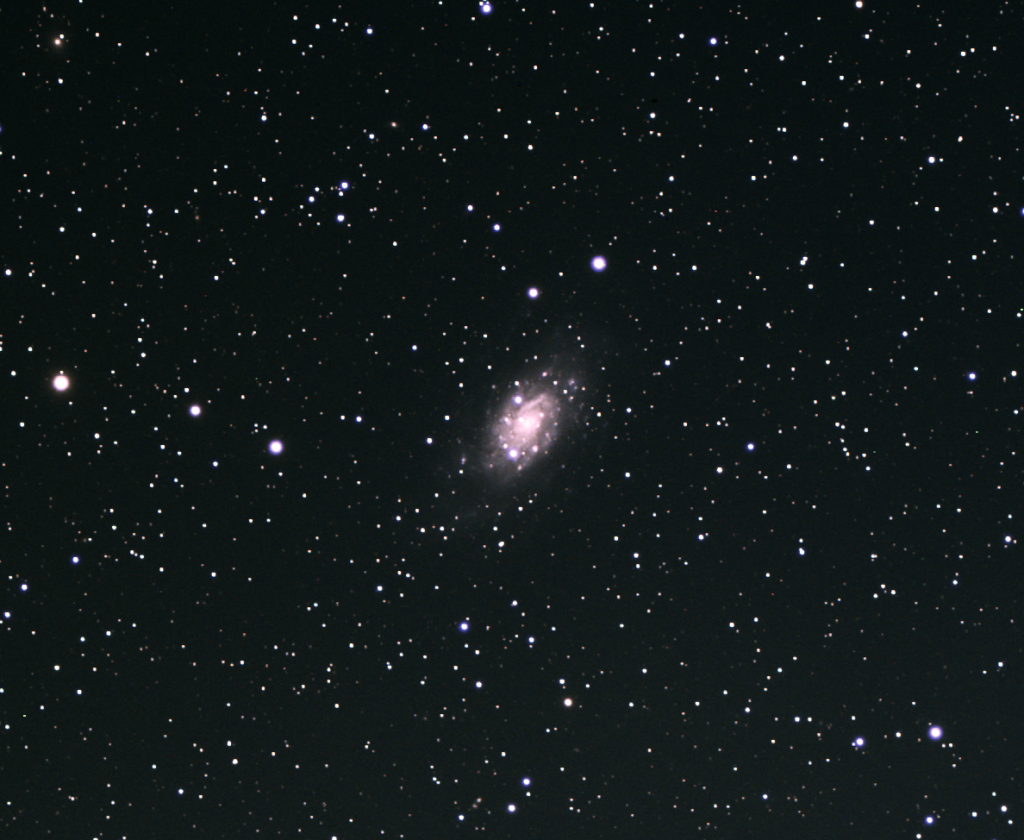
I still have a lot to learn about the post-processing. I have watched a few YouTube tutorials but I am basically just adjusting the levels and curves without really understanding what I am doing. Just have to keep working at it.
Update: 01/30/2023 – Did a little more post-processing tinkering. Here are the results.
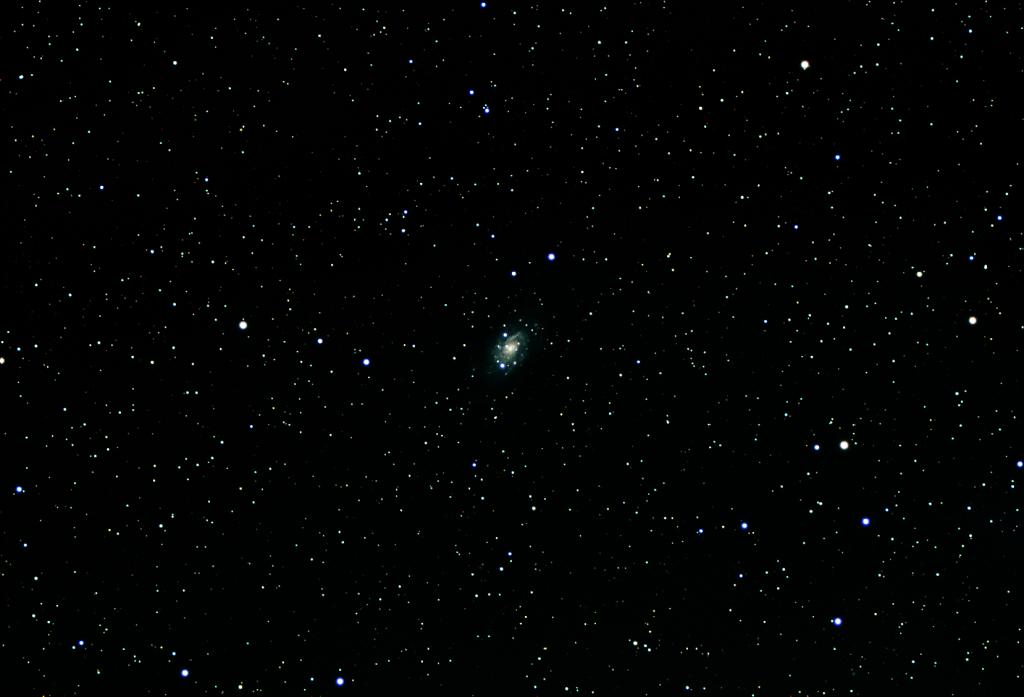
Was able to adjust things without blowing out the core as much. Just finer adjustments of the levels to get to a point where adjusting the curves did not over brighten the center. After adjusting levels and curves in GIMP the image was resized 80% but is uncropped to preserve the full FOV.
Once the Ekos scheduled job completed I captured a few minutes of data on Comet C/2022 E3 (ZTF).
Comet C/2022 E3 (ZTF) reached its perihelion on 12 January 2023 and the closest approach to Earth will be on 1 February 2023.
I monitored the capture run in SharpCap.
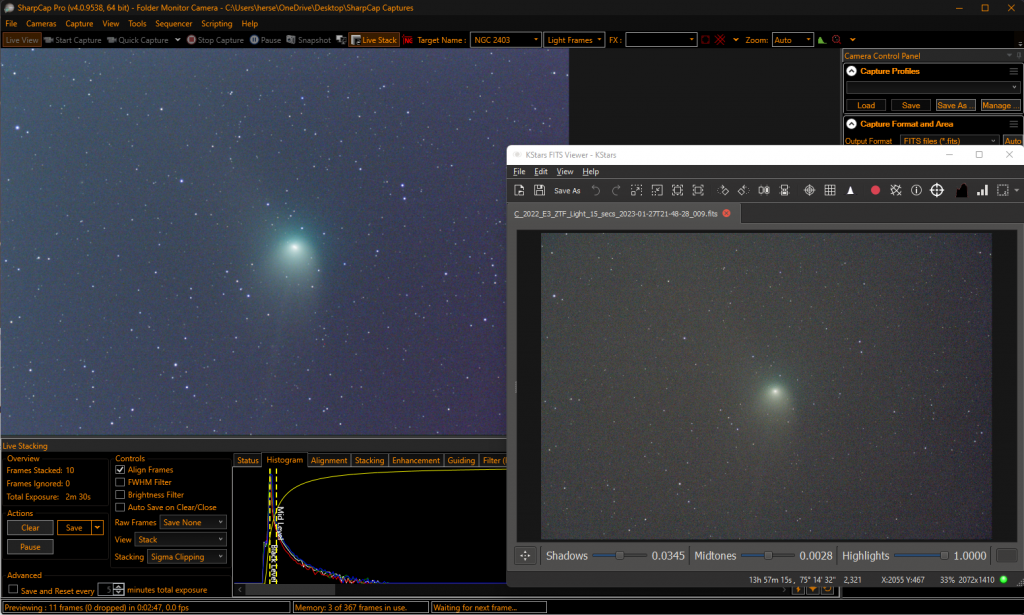
I used ASTAP to stack the captures using position of the comet as a reference point. The comet is really moving across the sky. The star trails below are after on 20 minutes of captures.
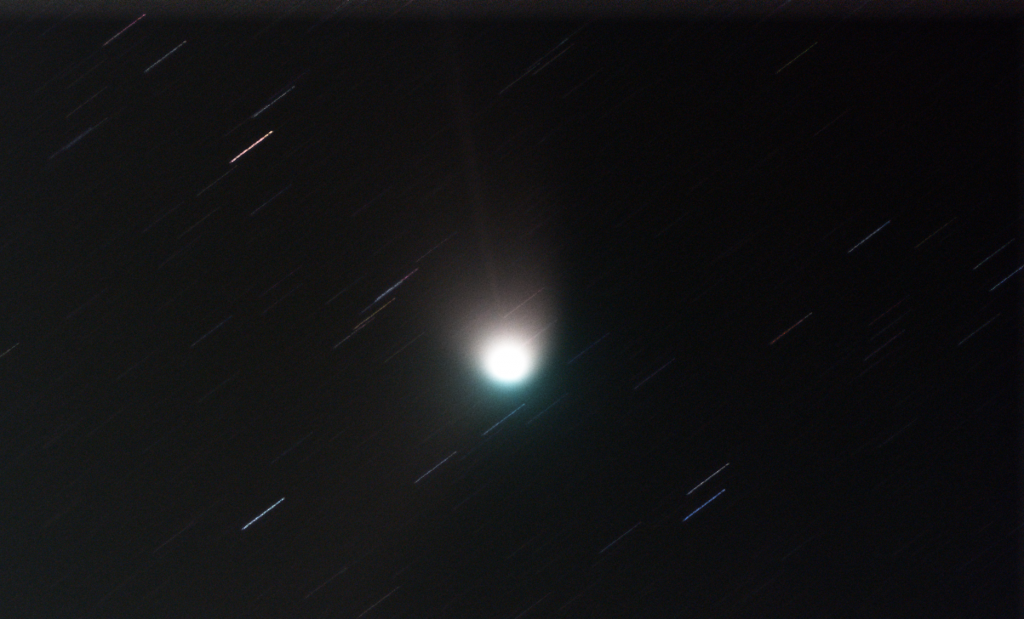
Since the comet is moving and is in a different position in each frame the stars show trails. The core is pretty blown out. I am probably going to use this data to learn a bit about layers in GIMP. Hopefully I can mask out the core so the comet’s tail can shine through.
Update 01/30/2023: I also took another run at processing C/2022 E3 (ZTF). I took a little different approach this time. I stacked each 1 minute (4 x 15 second exposures) into their own stacks to create 20 of them from the 80 I captured. Then I loaded them into DSS and used the comet tool to mark the core of the comet in each frame. I set the Stack setting for Mosaic and the Comet setting to Comet and Stars. When the stack finished I saved the result as a TIFF and opened it in GIMP to adjust the levels and curves. This is what I came up with:
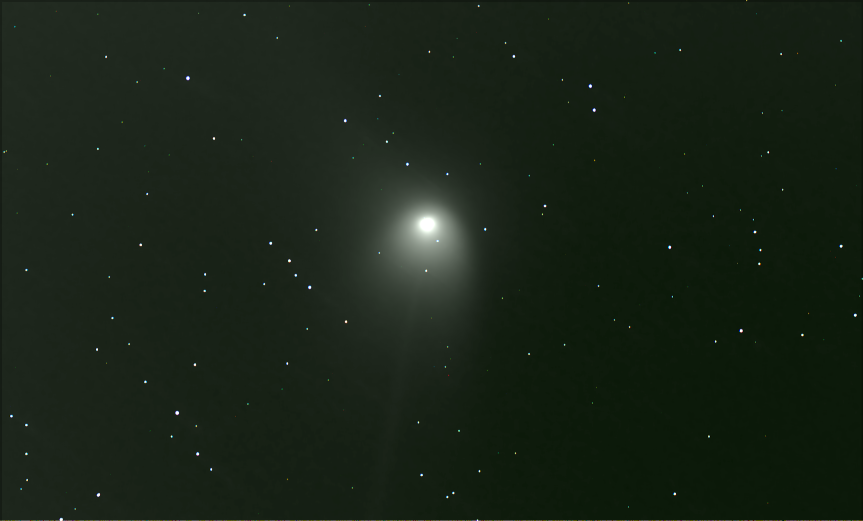
I parked the scope, packed things up, and covered the scope around 11:00 PM. The temperature had fallen to freezing (32 F) and it was pretty damp outside with some frost starting to form on hard surfaces.
I worked on “processing” the data on Saturday using ASTAP to stack and GIMP to adjust levels/curves. I still have a lot to learn. I want to mess with layers and masking to try to bring out some more of the comet tail without blowing out the core… same with the galaxy more details in the arms without loosing detail in the core. The forecast for clear skies over the next week is not very promising. I am hoping to spend a bit of time learning some more about post-processing with GIMP.


